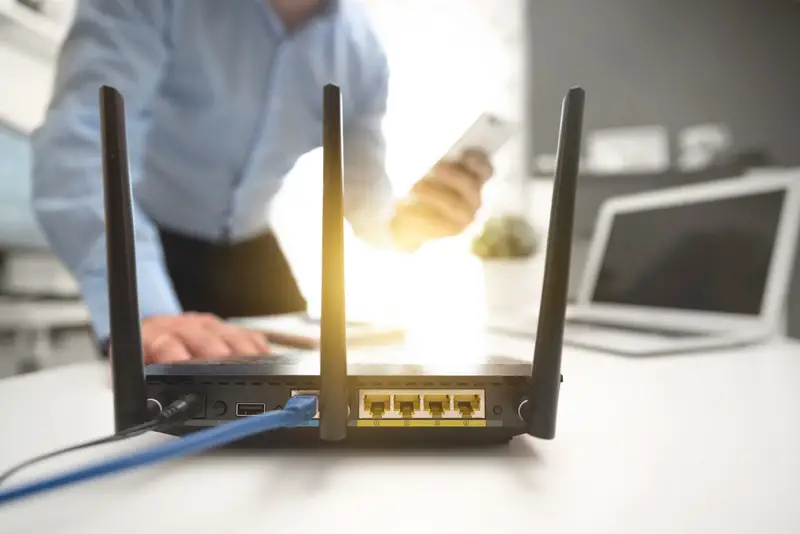Data transfer between this equipment requires a medium through which to pass. Computer network devices provide this medium.
In addition, these devices can be helpful to network administrators for the control and protection of a computer network. Each network device classification differs depending on functionality.
Computer network devices handle data traffic in a network. However, they can also have inter-network traffic.
They also utilize protocols to provide a solid connection between various computers or hardware. Knowing the layers of open system interconnection (OSI) is vital to understanding the operation of computer network devices.

Layers Of Open System Interconnection
The OSI model provides that communication between two endpoints is carried through layers.
Each layer serves the one above it in the network ladder. By design, all computer network devices belong to one or more layers.
Thus, data flows from an originating computer through the first device in the bottom layer. This data will pass through the relevant layers to the top and, ultimately, to the receiving computer.
Seven layers make up the OSI model. However, most computer network devices are in the bottom four layers. You can look further into each layer below.
The Physical Layer
This layer has devices that transmit raw data between endpoints. This can be from one computer to another or from a computer to a printer. Thus, you’ll find network devices on this layer use physical cables to provide the necessary connection.
Alternatively, they can give the connection via a wireless medium. It’s essential to note that this layer defines the medium and the connector. Therefore, it controls the transmission’s bit rate.
You’ll find a computer network device like the hub in this layer. Hubs can either be active or passive, depending on how they handle signals.
Active hubs are self-powered and can clean, improve, and distribute a network’s signal. Additionally, they can increase signals if necessary.
On the other hand, passive hubs don’t clean or enhance signals. They also accept data packets through ports. Repeaters also fall under the physical OSI layer.
The Data Link Layer
This second layer receives data from layer one before transmitting it to layer three. Therefore, it regulates the pace of data transmission between the two layers to ensure none is overloaded.
Additionally, this layer detects and handles any bit-transmission errors that may occur.
Network devices in this layer can fall under two sublayers. They can fall under logical link control (LLC) or media access control (MAC).
If a device is under the LLC sublayer, it synchronizes data frames, detects errors, and identifies protocols. On the other hand, a device under the MAC sublayer organizes frames and defines permissions necessary for data transmission.
The access point (AP) is the most common network device that falls under the data link layer.
Access points are wired or wireless devices with a transmitter, antennae, and a built-in adapter. You can also use access points like a router or bridge. Thus, you can use it to pass data from one access point to another.
Even though bridges fall under the physical layer, they are also classified under the data link layer. They help link local access networks to one protocol. However, they also filter data packets forwarding to the next layer.
Network Layer
The network layer involves routing data packets through the best path available in a physical network.
Thus, it finds and selects the best possible route to improve data transmission to the next layer. Devices in this layer primarily use internet protocol addresses (IPs) to perform their routing functions.
Examples of network devices that fall under the network layer include routers and switches.
Switches are more flexible than hubs and routers. Therefore, they provide a better effective network. Furthermore, you help increase your network’s protection.
You can have a switch primarily in the data link layer. However, a multi-layered switch can also work the network layer.
However, it’s crucial to remember that most distributed denial of service (DDO) attacks target multi-layered switches.
The Transport Layer
The network devices on this layer determine where to send data and at what rate it gets sent.
In addition, the devices determine how much data to send depending on the protocol involved. More importantly, the transport layer ensures the accuracy of data received on the other end.
The transport layer can also go by the term transmission layer. This layer has two protocols—first is the transmission control protocol (TCP). The second is the user datagram protocol (UDP).
A notable network device here is the gateway. Gateways provide inter-network communication. These are the entry and exit areas of your network. Thus, they handle all routing functions for your network.
Once you’re aware of the different OSI layers, placing each type of computer network device in its layer can be easy.
Conclusion
Computer network devices are crucial in inter and intra-network data exchange. Whether they fall under one OSI layer or another, their absence in the network can lead to incomplete or inaccurate data transmission and routing.
Therefore, having the necessary network devices in your system is vital.

